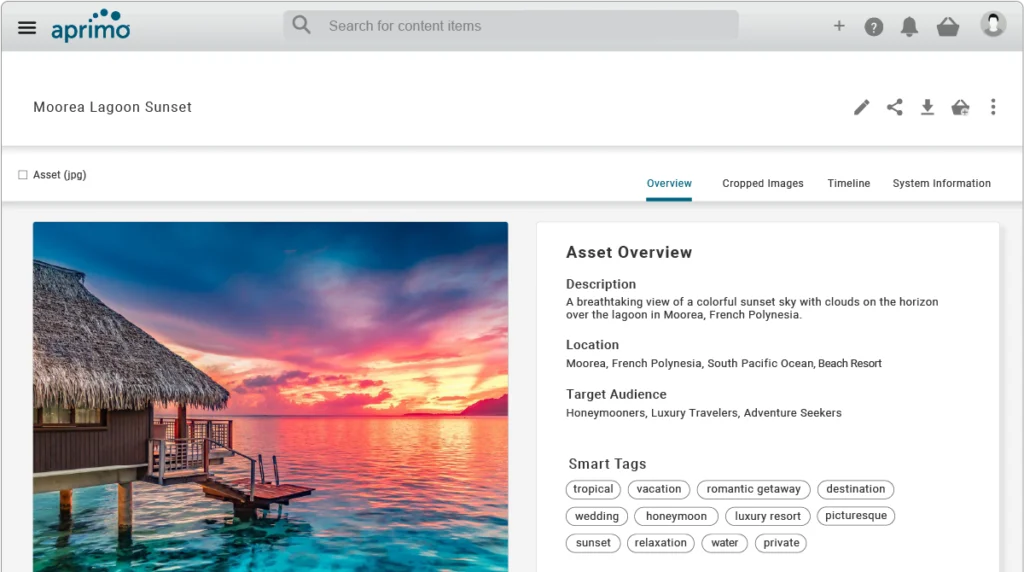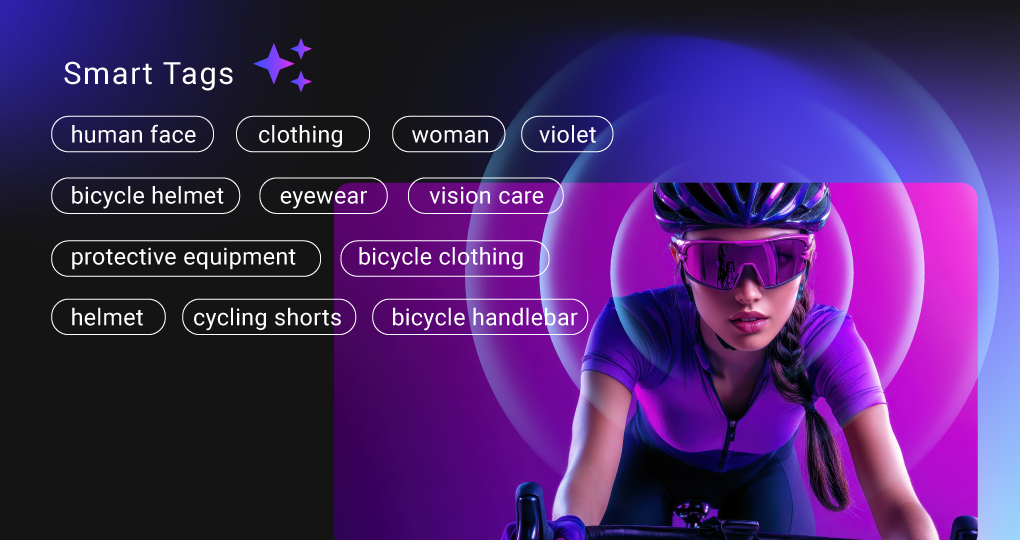The Growing Challenge of Image Management
Modern marketing teams manage thousands of visuals across brands, markets, and channels. Manually tagging each image is slow, inconsistent, and prone to human error.
As content libraries expand, inconsistent tagging becomes a serious obstacle to efficiency. Teams waste time searching for images or recreating assets they can’t locate. Automated metadata tagging eliminates that problem by applying intelligence at scale, keeping asset organization fast and accurate.
TL;DR
Automated metadata tagging uses AI to identify objects, people, and context within images, applying accurate metadata instantly. It saves time, ensures consistency, and makes visual assets easier to find and reuse across large libraries.
Defining Automated Metadata Tagging
Automated metadata tagging uses AI to analyze images and apply descriptive metadata automatically.
AI can detect objects, colors, logos, locations, and even emotions within an image. It can also pull contextual data from file names or surrounding projects to improve tagging accuracy. As users provide feedback, the AI refines its models for even better performance over time.
This makes metadata tagging scalable, consistent, and always aligned with organizational standards.
Who Benefits from Automated Tagging
Automated tagging supports multiple teams:
- Creative Teams: Save time by eliminating manual tagging.
- Marketing Operations: Gain reliable tagging for campaigns and channels.
- Brand Managers: Ensure assets stay compliant with brand standards.
- DAM Administrators: Reduce manual maintenance and improve search precision.
Any team with a large volume of visuals benefits from AI-driven tagging.
How AI Makes Tagging Smarter
AI combines speed and precision to automate what once required hours of manual work:
- Object and Scene Recognition: Identifies people, places, and items within images.
- Facial and Logo Detection: Verifies brand consistency and usage rights.
- Contextual Understanding: Enhances tagging by analyzing related content.
- Language and Localization: Applies tags across multiple languages.
- Learning and Adaptation: Improves accuracy as users confirm or adjust tags.
AI ensures that images remain discoverable, reusable, and compliant across teams and regions.
How Aprimo Automates Image Tagging

Aprimo’s Digital Asset Management platform uses AI to analyze and tag images automatically upon upload.
Key capabilities include:
- AI-Powered Image Recognition for accurate object and scene detection.
- Brand Compliance Checks to flag outdated or off-brand visuals.
- Custom Metadata Alignment that matches your taxonomy.
- Continuous Learning to refine accuracy with every use.
- Ecosystem Integration across the full content lifecycle.
The result is faster onboarding, higher accuracy, and stronger asset governance.
Why Automated Tagging Matters
Metadata may be invisible, but it’s what makes assets usable. Without it, even the best visuals become buried.
Automated tagging ensures that every image carries accurate, searchable data. Teams find what they need instantly and reuse assets confidently. Consistent tagging also strengthens analytics, helping organizations understand how content performs and where to invest creative effort.
Closing Thoughts
Automated metadata tagging bridges human creativity and machine precision. By letting AI handle repetitive tagging, organizations can focus on strategy and storytelling.
For teams managing large volumes of images, automation is the key to scaling efficiency and maintaining control over their content ecosystem.
FAQ
What is automated metadata tagging for images?
It’s the use of AI to describe images automatically, applying metadata for easier search and management.
How accurate is AI-powered image tagging?
AI achieves high accuracy and improves over time through learning and user feedback.
Can automated tagging match our metadata structure?
Yes. Aprimo aligns AI tagging with your taxonomy so new metadata fits existing standards.
How does Aprimo automate image tagging?
Aprimo tags assets automatically on upload, detects visual content, and refines accuracy through continuous learning.



